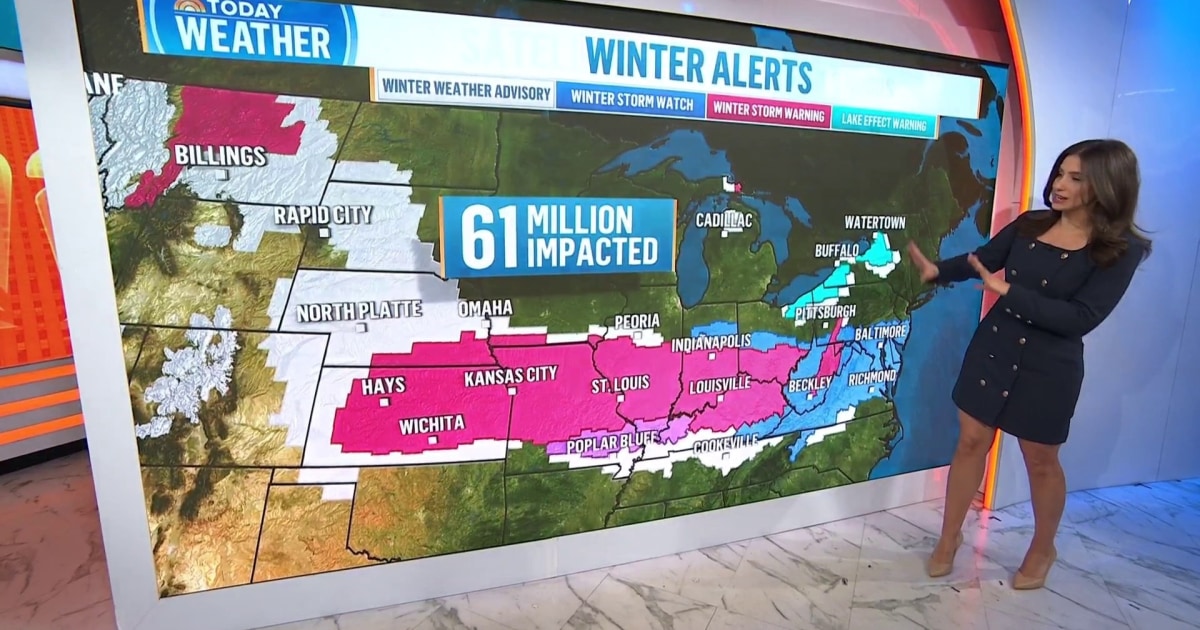Winter Storm Watch: Insights and Preparations for Severe Weather
As a significant winter storm approaches the United States, the National Weather Service has issued a winter storm watch for various regions, urging residents to prepare for potentially hazardous conditions. This article will explore the expected impact of the storm, essential safety tips, and the areas likely to be hit hardest, all while instilling a sense of readiness and resilience in the face of nature’s fury.
Understanding the Winter Storm Watch
A winter storm watch is issued when there is a potential for severe winter weather, including heavy snow, sleet, and ice accumulation. These conditions can lead to dangerous travel, power outages, and other hazards. It’s crucial to understand what a winter storm watch entails and how to respond effectively.
The storm is characterized by:
- Heavy snowfall: Accumulations can vary but are expected to exceed several inches in many areas.
- Freezing rain: This can create a slick layer on roads and power lines, increasing the risk of accidents and outages.
- Strong winds: These can exacerbate the cold and lead to drifting snow, making travel even more treacherous.
Expected Impact of the Winter Storm
Weather models predict that the winter storm will impact a broad swath of the country, particularly in the Midwest and Northeast regions. States such as Michigan, Ohio, Pennsylvania, and New York are under close scrutiny for severe weather conditions. As the storm moves eastward, its effects may also reach parts of New England.
Residents in these areas should be prepared for:
- Travel disruptions: Road conditions may rapidly deteriorate, leading to accidents and road closures.
- Power outages: Ice accumulation on power lines can lead to outages, leaving many without heat during frigid temperatures.
- School and business closures: Many institutions may close or operate on a limited schedule due to safety concerns.
How to Prepare for a Winter Storm Watch
Preparation is key when it comes to facing a winter storm. Here are essential steps to take before the storm hits:
Gather Emergency Supplies
Having the right supplies on hand can make a significant difference. Consider stocking up on the following:
- Non-perishable food: Canned goods, dry snacks, and ready-to-eat meals can sustain you if you lose power.
- Water: Aim for at least one gallon per person per day for at least three days.
- Medications: Ensure you have enough prescriptions to last through the storm.
- Flashlights and batteries: Power outages are common during winter storms, so be prepared for darkness.
Winterize Your Home
Take steps to protect your home from the cold:
- Insulate pipes: Protect vulnerable pipes from freezing by wrapping them in insulation.
- Seal windows and doors: Prevent drafts by using weather stripping or caulking.
- Check your heating system: Ensure that your furnace is in good working condition before the storm hits.
Stay Informed
Weather conditions can change rapidly, so it’s essential to stay updated:
- Listen to local news: Tune into local radio or television stations for the latest updates.
- Use weather apps: Many apps provide real-time weather alerts and conditions.
- Follow social media: Local meteorologists and emergency services often share timely information online.
Safety Tips During the Winter Storm
Once the storm begins, your safety is paramount. Here are some crucial tips to follow:
Stay Indoors
If possible, avoid traveling during the storm. Stay indoors and keep warm. If you must go outside:
- Dress in layers: Wear insulated and waterproof clothing to protect against the cold and wet conditions.
- Limit your time outdoors: Avoid prolonged exposure to the elements, which can lead to frostbite or hypothermia.
Driving Precautions
If you have to drive:
- Keep your gas tank full: This can help prevent freezing and ensures you have fuel in case of delays.
- Drive slowly: Reduce speed and increase following distance to accommodate for slick roads.
- Have an emergency kit: Include blankets, food, water, and a flashlight in your vehicle.
Power Outage Preparedness
In the event of a power outage:
- Use generators safely: Place them outdoors to prevent carbon monoxide poisoning.
- Keep refrigerator doors closed: This helps maintain the cold temperature for several hours.
Where to Seek Help
If you encounter troubles during the storm, know where to turn for assistance:
- Local emergency services: Always dial 911 for emergencies, including accidents or injuries.
- Community shelters: Some communities open shelters during severe weather; check your local listings for locations.
- Social services: Reach out to local organizations for support with food, heating, and other needs.
After the Storm: Recovery and Safety
Once the storm has passed, it’s essential to assess the situation carefully. Here are some steps to follow:
- Check for damage: Look for hazards such as downed power lines or damaged trees.
- Cautiously clear snow: Avoid overexertion; consider hiring professionals if necessary.
- Stay informed: Continue to monitor local news for updates on recovery efforts and safety advisories.
Conclusion
A winter storm watch signals that it’s time to prepare for severe weather. By understanding the potential impacts, gathering essential supplies, and following safety protocols, you can protect yourself and your loved ones during the storm. Remember, preparation is key, and staying informed will help you navigate whatever challenges the impending winter storm may bring. With the right mindset and actions, you can weather the storm and emerge safely on the other side.
See more Your Daily Weather



